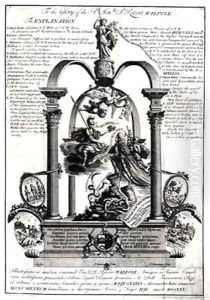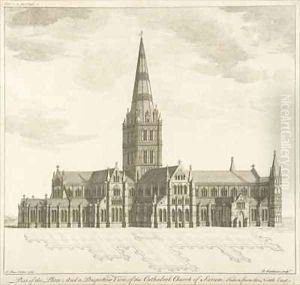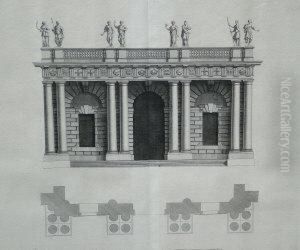Pierre Fourdrinier Paintings
Pierre Fourdrinier was a French engraver and printmaker born in 1698, whose work primarily spanned the first half of the 18th century. Though information about his early life and training is somewhat scarce, it is known that he established a significant reputation for his craftsmanship in engraving. His work particularly flourished in England, where he produced a substantial body of work.
Fourdrinier's engravings covered a variety of subjects, including architectural works, landscapes, and decorative prints. He is perhaps best remembered for his architectural engravings, which were detailed and precise, reflective of the contemporary interest in neoclassical architecture and the works of prominent architects of the time. His engravings were often based on the designs of leading architects and served as a means of disseminating their styles and ideas.
During his career, Fourdrinier collaborated with several artists and architects, engraving their designs and contributing to the spread of their fame. His works were not only artistic but also served an important role in the documentation of architectural designs and were used by craftsmen and builders as references for their constructions.
Despite the professional success he enjoyed, personal details about Fourdrinier's life remain limited. He worked extensively with his brother, who was also involved in the printmaking business, indicating that the Fourdrinier family had a significant presence in the world of art and engraving.
Pierre Fourdrinier passed away in 1758. His legacy is carried on through the numerous engravings he left behind, which continue to be studied and appreciated for their technical skill and historical value within the context of 18th-century art and architecture. His engravings provide a window into the architectural tastes of the era and remain important historical records of the period's aesthetic preferences.


![[garden Architecture]](https://www.niceartgallery.com/imgs/589155/s/pierre-fourdrinier-garden-architecture-74aecbe2.jpg)
